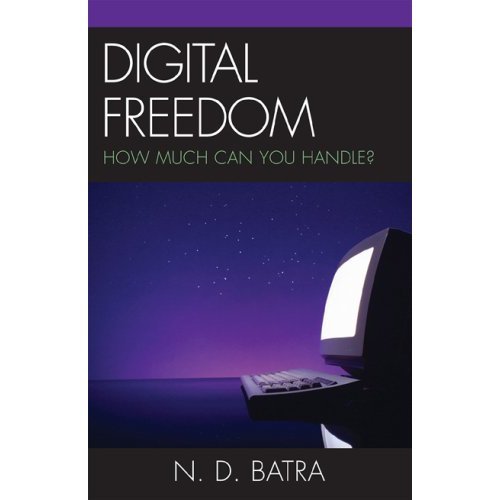Printed from
The Times of India
Some Creative Messiness, Please
N D Batra, Mar 19, 2010, 12.00am IST
Singapore is an obsessively orderly and tidy society. You begin to feel the difference as soon as you disembark at the Changi airport and smoothly glide through Immigration for a taxi that zips through the city under unobtrusive and ubiquitous security cams. If there is an accident five miles ahead of you, i have been told, you would be alerted. The city knows who is doing what; nonetheless, it gives you a genuine feeling of openness, safety and comfort, if you follow the rules. Law enforcement is another obsession here.
A Malaysian-Indian family who recently moved to Singapore told me that this is the safest place for women. In many ways, the measure of a civilised society is how safe its women, whether in hijab, sari or miniskirt, feel when they use public transportation, taxis or walk its city streets at night.
Singapore is perhaps the only country in the world that has banned chewing gums, whose discarded messy blobs are a disgusting public nuisance. Since the unintended and terrible consequences of the 1920-33 prohibition experiment, it is unthinkable that Americans would ever accept this kind of draconian law. But Singapore is different. Unsocial behaviour (chewing gums, spiting paan, etc) and unruly people that disturb social harmony and tarnish the Singapore brand are unacceptable. If it could, the city-state would like to get rid of foreign workers from South and South East Asia, whose nasty social habits, drunkenness, littering, spitting, loud music and public urination are intolerable to Singaporeans.
Many Singaporeans shun the lowly work that foreign workers do and look down upon them from their highrise air-conditioned homes. So auxiliary police officers (APO) patrol areas where foreign workers live and congregate - areas such as Little India, the Golden Mile Complex and other places - in spite of the fact that there is no evidence that foreign workers commit more crimes than local Singaporeans. The arrest rate, according to police figures for 2007, for foreign work-permit holders, was 227 per 100,000 as against 435 for Singaporeans; nonetheless, the country's largest newspaper recommended that "labour contractors and employers make it a contractual duty to brief guest workers thoroughly on the dos and don'ts of life in a tidy society".
Foreign workers in construction, manufacturing and service industries are vital to the Singapore economy, and there are 856,000 of them out of a total foreign population of 1.25 million. But the new budget being discussed now in parliament would impose a progressive levy on companies hiring foreign workers, hoping that hiring restrictions would motivate companies to automate and innovate, thus, increasing productivity.
Higher productivity would require fewer unskilled foreign workers and more highly skilled Singaporean workers. It is doubtful Singapore will ever be able to do without foreign workers, whether high-skilled professionals or low-level construction and domestic workers.
For many Singaporeans, 1.25 million foreigners are too many but the trouble is that Singaporeans are not making enough babies. The fertility rate is one of the lowest in the world. Educated Singaporean women are career-oriented; and, besides, they are professionally extremely competitive with male workers. What makes child-rearing so difficult in Singapore is the paucity of infant care for which the going rate is, in Singapore dollars, $1,000 to $1,500 per month for two to 18 months toddlers. The government gives $600 to full-time working mothers. Some expectant mothers reserve a seat in an infant care facility as early as two months into the pregnancy. The most impressive achievement of Singapore is the mutual acceptance - not merely tolerance - of each other among its various ethnic and religious groups.
Commenting on inter-religious harmony, senior minister Goh Chok said, "Singaporeans are also blessed because many religious organisations reach out to (the) larger community, not just cater to their own flock." The self-congratulation was prompted by the decision of the Ramakrishna Mission to offer 60 parking spaces to Bartley Christian Church worshipper next door for their Sunday services for which the mission built a special gate on its compound. Inter-religious and inter-ethnic recriminations are almost absent.
Recently when a pastor criticised Buddhism and Taoism, whose practices are followed by most ethnic Chinese constituting Singapore's overwhelming majority, his remarks were regarded as socially unacceptable. Singapore politicians, city planners, architects, educators and think-tankers aspire to make the city a hi-tech global hub of trade and commerce that competes with Tokyo, Hong Kong and Shanghai, a goal that is not difficult to achieve.
But to become a great centre for the arts and culture, like New York or London, Singapore needs unbridled freedom of speech and expression, and some tolerance for the creative messiness that accompanies it. It is freedom of speech in all its manifestations that enables a nation to generate an abiding grand narrative or a myth that binds its people. Today Singapore is a very neat, prosperous and liveable city. It is free from civic violence but its civic life is dull. The city-state has no great heroes. It has no grand story to tell the world.
(The writer is professor, communication and diplomacy, Norwich University, US.)
Thursday, March 18, 2010
Ode to Singapore
at Thursday, March 18, 2010 Posted by Narain D. Batra 0 comments
Topics
Culture,
Freedom,
Globalization
![]()
Subscribe to:
Comments (Atom)
